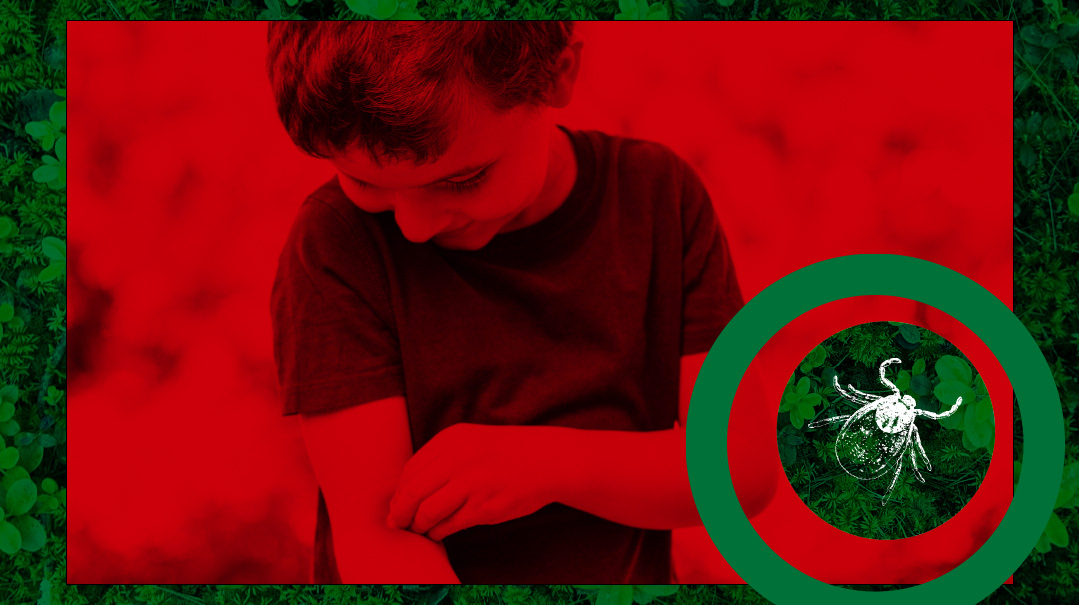Bugs in the System

How Lyme disease mounts a stealthy, silent attack on the unsuspecting

It’s hard enough to watch a family member suffer through a painful physical or mental illness when you know what the problem is. But just imagine that your previously happy, healthy spouse or child suddenly develops a mysterious cluster of debilitating symptoms that your doctor can’t seem to diagnose or treat: fever, joint and muscle aches, abdominal pain, emotional volatility, difficulty focusing in class, visual impairment. You then go from one specialist to another, but none of them seem able to pinpoint a cause or offer any relief.
That’s what happened to Suri B., whose ten-year-old son came home from camp bearing a plastic bag with a large tick inside, courtesy of the camp nurse. “The tick is pretty large, so it was probably feeding on your son for some time,” she said.
Suri knew that tick bites can transmit Lyme disease, so she brought the tick to her pediatrician. The tick was sent to the lab for analysis, and the doctor expressed relief: “It’s a dog tick, not a deer tick, so it doesn’t carry Lyme,” she said. “You have nothing to worry about.”
Three months later her son developed severe abdominal cramps that seemed to have nothing to do with what he ate. In the attempt to cure his symptoms, Suri brought him to a battery of specialists who subjected him to X-rays, other testing, hospital visits, and medications.
Before long, this formerly outgoing, funny, and talented child withdrew socially, and his mental state spiraled downward. At first, his pediatricians dismissed it as normal mood swings of pre-puberty and the pressures of school and social life. But her son’s mental state didn’t get better with time. Fearing he might have been traumatized by abuse, she took him to a psychotherapist.
It was the therapist who proposed testing for Lyme again. Dog ticks don’t carry Lyme, but they can carry other non-Lyme disease causing infections that can likewise attack both body and brain.
“When I went back to my pediatrician, he reluctantly gave me a referral to test for Lyme and PANDAS,” Suri says. “My son tested negative for both.”
Suri now knows that standard tests can produce both false negatives and positives, and generally don’t pick up other similar Lyme-type infections that produce the same symptomology. But it took several more years of suffering to learn that.
With a negative Lyme test and no clear path forward, her son deteriorated mentally and physically. He developed migraines, lethargy, depression, tremors, blurred vision, tachycardia, muscle and body aches, night sweats, brain fog, plus the original presenting complaint of abdominal cramps. He was prescribed a regimen of anti-anxiety and anti-depression meds as well as sleeping pills for his insomnia.
“I barely recognized my son anymore,” Suri says. “He was being pumped with meds that seemed to be doing more harm than good and created their own side effects. After two years, I finally read a magazine article that discussed other non-Lyme co-infections and gave a reference to Life for Lyme [a Lakewood-based Jewish organization that advises and advocates for Lyme patients, also known as Chai for Lyme]. I was put in touch with a doctor in Williamsburg who has experience treating Jewish patients who summer in the country. She took 20 vials of blood, and my son was diagnosed with three Lyme-like co-infections. That doctor saved his life.”
Not every physician is open to the idea that Lyme disease underlies all those perplexing chronic conditions, and many are reluctant to engage in prolonged, expensive testing and treatment.
But just about anyone who spends time in the Catskills or lives in wooded areas knows about watching out for ticks, whose bites can transmit Lyme disease. People know the drill: If you find a tick on you, bag it and send it to a lab. If you develop a rash and fever and your antibody test comes up positive, you’ll be prescribed an antibiotic.
If detected and treated promptly with antibiotics, most Lyme patients recover. But the situation often becomes more complicated for those who aren’t diagnosed quickly or at all, or who miss treatment at a critical moment (not everybody sees a tick, and not everybody develops the telltale “bullseye” rash). Others are treated but still don’t seem to recover. Some of these people spend years suffering with persistent, ever-worsening conditions, and the expenditure in time, suffering, and money drains families of resources both emotional and financial.
Oops! We could not locate your form.







